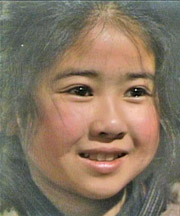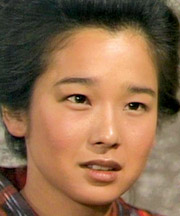Oshin comes back
Channa Bandara Wijekoon
The much loved Japanese television serial Oshin is to be telecast on
Rupavahini once again after a lapse of 12 years. ‘Oshin’ had proved her
mettle as a lovable and inspirable character for decades in the global
context. The television serial caters to the masses comprising the young
and old.
|
 |
| Little
Oshin |
 |
| Young
Oshin |
 |
|
Athula
Ransirilal |
A production of NHK television, Oshin had been dubbed in many
languages time to time to telecast in various countries. In Japan it was
telecast twice daily, at 11.20 a.m. and once again in the evening.
The series covers three generations of Japanese life pre and post
war.
In a nutshell, Oshin is a ‘rags to riches’ story. The story revolves
around a courageous girl (Oshin) of a poor peasant family lived in Japan
in the early stages of twentieth century. The way little Oshin boldly
faces challenges in life and the sheer determination shown by Oshin in
her young age brings inspiration to children as well as to parents.
Oshin was first brought to Sri Lanka by the veteran artiste Henry
Jayasena from Japan in 1989 at the time of M J Perera. The task of
dubbing the program in Sinhala was assigned to none other than Titus
Thotawatte, a man in abundance of innate skills who was a veteran of
Sinhala cinema.
Titus and his colleague Athula Ransirilal with a team of 250 dubbing
artists did the job to a level which was eventually admired by all Sri
Lankan television viewers alike. Sinhala dubbed version of Oshin
enthralled Rupavahini viewers two decades back with its sheer magic.
Rasipaba Sandeepani (very young Oshin), Rasadari Peiris (young and
middle aged Oshin), Grace Ariyawimal (grandma Oshin), Ratnawali
Kekunawela, Victor Miguel, Ratna Sumanapala, Gemunu Wijesuriya, Nihal
Jayawardene and Parakrama Perera were among the dubbing artists who
contributed to Oshin. Athula’s other colleagues were Kelum Palitha,
Sanath Senani, Chandana Seneviratne, H Churchill, Ranjith Silva and
Anura Dharmasena.
Athula took the reins from Titus Thotawatte on his demise to make the
history repeat. Speaking of the fresh telecast of Oshin, he said, the
backdrop in which the telecast coinciding with is the completion of 60
years of cordial friendship between Sri Lanka and Japan and 30-year
relationship between SLRC and NHK.
SLRC had the privilege of sharing television programs with Japan from
its commissioning date. Usually every year Japan foundation send
programs worth huge amounts free of charge to SLRC. These programs
comprise films, documentaries, children’s programs and cartoons.
With Athula’s initiation and the blessings of the present Rupavahini
Chairman Mohan Samaranayake, SLRC team had made a fresh request from
Japananese ambassador for Oshin this time around. The ambassador has
gone to the extent of convincing the Japan foundation to bear the huge
cost involved and give Oshin ‘free of charge’ to be telecast over
Rupavahini for the benefit of Sri Lankan viewers.
 |
|
An
emotional scene from Oshin |
We have to pay a tax for dubbing. When the proposal for taxation was
brought, people like Professor Somaratne Balasuriya, Asoka Serasinghe,
Ravindra Randeniya and Somaratne Dissanayake suggested exempting
programs like Oshin from tax, said Athula thoughtfully. Oshin is the
very first ‘long-tele series’ dubbed in Sinhala to be telecast here.
Titus Thotawatte with his expertise had done subtle adaptations to the
original script to be in harmony with Sri Lankan culture, folklore and
Sinhala speaking people. Thus the Sri Lankan viewers strongly felt the
emotion in the story.
Oshin will be telecast five days every week (Monday to Friday) from
6.30pm to 7.30pm from May 25.
[email protected]
|



